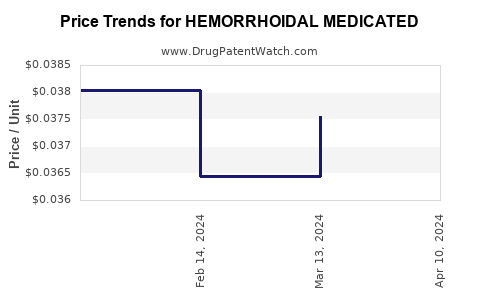Drug Price Trends for HEMORRHOIDAL MEDICATED
✉ Email this page to a colleague

Average Pharmacy Cost for HEMORRHOIDAL MEDICATED
| Drug Name | NDC | Price/Unit ($) | Unit | Date |
|---|---|---|---|---|
| HEMORRHOIDAL MEDICATED 50% PAD | 70000-0364-01 | 0.03699 | EACH | 2024-11-20 |
| HEMORRHOIDAL MEDICATED 50% PAD | 70000-0364-01 | 0.03761 | EACH | 2024-10-23 |
| HEMORRHOIDAL MEDICATED 50% PAD | 70000-0364-01 | 0.03796 | EACH | 2024-09-18 |
| HEMORRHOIDAL MEDICATED 50% PAD | 70000-0364-01 | 0.03863 | EACH | 2024-08-21 |
| HEMORRHOIDAL MEDICATED 50% PAD | 70000-0364-01 | 0.03775 | EACH | 2024-07-17 |
| >Drug Name | >NDC | >Price/Unit ($) | >Unit | >Date |


